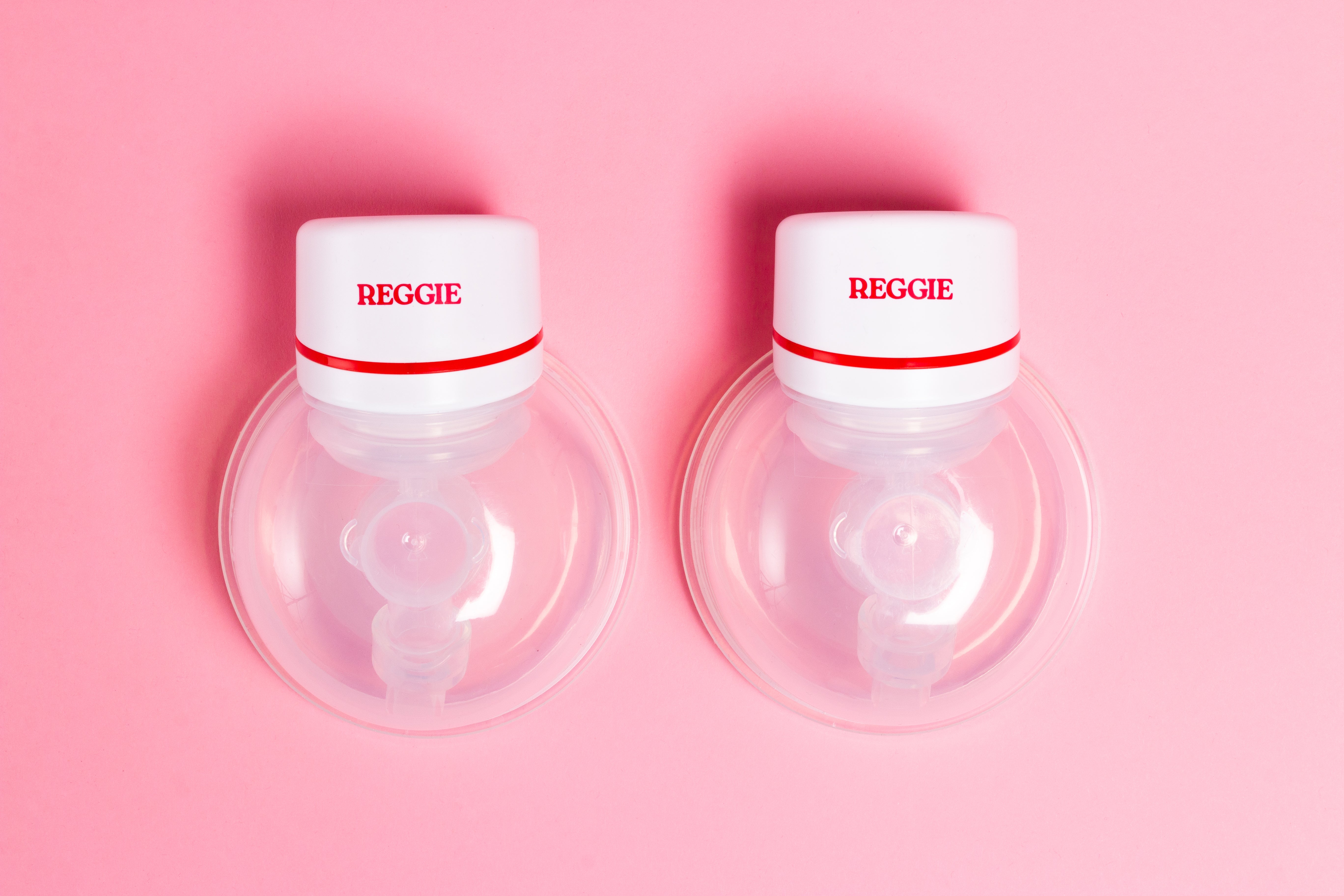How to Clean Your Wearable Breast Pump: Step-by-Step Guide
Keeping your wearable breast pump clean is essential for your baby’s health and the pump’s performance. Dirty pump parts can harbour bacteria, reduce suction efficiency by up to 38%, and shorten your pump’s lifespan. Here’s what you need to know to clean your pump effectively:
- After every use: Disassemble and clean all parts that contact milk using warm, soapy water. Rinse thoroughly and air-dry on clean paper towels. Avoid using abrasive sponges or essential oil-based cleaners.
- Daily sterilisation: Recommended for babies under 3 months old or if your baby is unwell. Use boiling, steam bags, or UV sterilisers for the best results.
- Quick-clean methods: Use hygienic wipes or rinse parts immediately after use when on the go, but ensure thorough cleaning within 4 hours.
- Troubleshooting tips: Replace mouldy tubing, inspect valves regularly, and clean membranes to maintain suction.
Following these steps will keep your pump safe and efficient for longer. Let’s dive into the details to make cleaning easier and more effective.
Required Cleaning Tools
To follow the CDC-recommended cleaning routines, you'll need the right tools. Here's what to keep in your cleaning kit.
Basic Cleaning Items
Start with gentle, effective tools. Use a mild, antibacterial-free dish soap to avoid damaging pump materials [10]. Instead of the kitchen sink, opt for a dedicated cleaning basin - research shows 58% of bacterial contamination stems from using sinks for cleaning pump parts [8].
Daily essentials include:
- Angled bottle brushes for cleaning flange crevices
- Nipple brushes for valve components
- Mesh drying rack for proper air circulation
- Microfibre cloths for drying without leaving lint
Extra Cleaning Tools
For an extra level of cleanliness, consider tools like:
- Steam bags (quick 3-minute sterilisation)
- UV sterilisers for silicone parts
- Hygienic wipes for cleaning on-the-go
Items Not to Use
Using the wrong tools can damage your pump or even pose risks to your baby. Studies link improper cleaning materials to 72% of premature pump failures [7].
"Never use bleach or chlorine-based solutions on pump parts, as these degrade silicone components and create microscopic cracks where bacteria can thrive", advises Medela's product safety guide [7].
Avoid these common mistakes:
- Abrasive sponges that can scratch surfaces
- Essential oil-based cleaners that leave behind unsafe residue
- Alcohol wipes that dry out valve components [7]
Different pumps have specific cleaning needs. For example, the Momcozy S12 Pro requires full disassembly, while the Willow pump needs specialised valve brushes [8][9]. Always check your pump's manual for detailed instructions.
3-Step Cleaning Guide
Follow these three simple steps to help keep your pump in great condition for up to 18 months [1][3]:
1. Take Apart Your Pump
Start by washing your hands with soap and water. Then, carefully disassemble all parts that come into contact with milk:
- Remove flanges or breast shields from the collection cups.
- Detach silicone valves and membranes.
- Separate backflow protectors, if your pump includes them.
If some parts are tricky to remove, soak them briefly in warm water (37-43°C). This helps loosen milk residue without harming silicone components [11].
2. Clean Each Part
Use warm water (37-43°C) for cleaning [11]. Pay attention to the specific needs of each part:
| Part | Cleaning Method | Extra Tip |
|---|---|---|
| Flanges | Hand or dishwasher | Check grooves carefully. |
| Valves | Hand wash | Use a tapered brush. |
| Tubing | Manual-dependent | Avoid submerging. |
For dishwasher-safe parts, place them in a mesh washing bag, set them on the top rack, and use a fragrance-free detergent [12].
3. Rinse and Dry
To avoid bacteria build-up, follow these final steps:
- Rinse thoroughly: Run water over all parts to remove soap residue.
- Inspect for cleanliness: Hold valves up to the light to check for cloudiness. If needed, soak them in a solution of 1 part white vinegar to 3 parts water for 15 minutes [12].
- Air dry completely: Lay the parts out in a clean, dust-free area for at least an hour [11].
Once everything is dry, your pump is ready for use or sterilisation. Advanced sanitisation methods will be covered next.
Sterilising Your Pump
Once your pump is cleaned, it's time to take an extra step to ensure it's free from harmful bacteria. Sterilising goes beyond basic cleaning, providing an added layer of safety for your baby. According to research from the University of California, San Francisco, daily sterilisation can cut bacterial contamination by 99.9% compared to cleaning alone [13].
Boiling Instructions
Here’s how to sterilise your pump parts using the boiling method:
- Preparation & Sterilising: Fill a large pot with water and bring it to a rolling boil. Use clean tongs to fully submerge the pump parts, ensuring they don’t touch the sides or bottom of the pot. Let them boil for 5–10 minutes [2].
- Drying: Carefully remove the parts with clean tongs and place them on fresh paper towels to air dry.
Steam Bags vs. Sterilisers
Different sterilisation methods suit different needs. Here's a quick comparison:
| Method | Time Required | Daily Capacity | Best For |
|---|---|---|---|
| Steam Bags | 3–5 minutes | 2–4 sets | Travel or office use |
| Electric Steriliser | 6–15 minutes | 6–8 sets | Home or frequent pumping |
| UV Steriliser | 5–10 minutes | 4–6 sets | A chemical-free option |
"Dr. Emily Chen's research highlights boiling as environmentally friendly and steam bags as convenient [6]."
When to Sterilise
The frequency of sterilisation depends on your baby’s age, health, and specific circumstances:
- Daily sterilisation: Necessary for babies under 3 months old.
- Twice daily: Recommended for premature babies or those with weakened immune systems.
- After illness: Always sterilise all parts if your baby has been sick.
- First use: Sterilise any new pump parts before their first use [14].
For most situations, sterilising once each morning is enough when paired with thorough cleaning after every use. Some brands, such as Willow, suggest daily sterilisation for the first 14 days, then switching to weekly sterilisation afterward [2].
sbb-itb-08733ff
Fixing Common Problems
These tips focus on maintaining a clean pump while tackling specific performance challenges:
Removing Mould
Mould can impact both safety and performance, so it's crucial to act quickly. Here's how to handle it:
For tubing with visible mould:
- Replace the tubing immediately – never try to clean mouldy tubing [1].
- To avoid mould in the future, rinse tubes with warm soapy water after every use [1].
- Hang tubes vertically to dry completely before storing them [4].
For other pump parts:
| Component | Cleaning Method | Time | Additional Care |
|---|---|---|---|
| Valves | 1:1 vinegar and water | 30 minutes | Use a gentle brush |
| Flanges | Hot soapy water | 15 minutes | UV sterilisation |
| Membranes | Enzyme-based cleaner | As directed | Ensure thorough air drying |
Improving Suction
If you're dealing with suction loss (up to 38%, as noted earlier), these steps can help:
1. Check and Clean Valves
Valves are small but critical. Clean them thoroughly after every use to keep them working properly.
2. Inspect and Maintain Diaphragms
Regularly check diaphragms for any tears or damage. Clean them carefully to ensure they stay in good condition.
Quick Cleaning Tips
For those moments when you're short on time but need a quick clean:
Emergency Cleaning Kit
- Breast pump wipes [15]
- Extra pump parts
- A sealable storage container
When you're on the go:
- Rinse parts immediately after use.
- Store them in a clean container.
- Make sure to clean them thoroughly within 4 hours [4].
Summary
Keeping your pump clean not only protects your baby but also ensures the pump works efficiently. Here's what you need to know:
- Fully disassemble and clean all parts after every use to avoid bacteria buildup and maintain proper suction [1].
- Sterilise daily if your baby is under 3 months old [4].
- Quick-clean options are fine for short-term use, but a full cleaning should follow within 4 hours [14].
- Check valves and membranes often, as they’re key to suction. Replace them as needed.
To get the best results, pair these cleaning habits with the troubleshooting tips shared earlier. Regular care addresses CDC concerns about bacterial risks and prevents suction loss, which research shows can drop by up to 38% without proper maintenance [3].
Helpful tips to keep in mind:
- Let parts air-dry on clean paper towels.
- Replace tubing immediately if it shows signs of mould [1].
- Store dry parts in sealed containers.
- Swap out worn components quickly to keep everything running smoothly.
Following these steps will help your pump stay reliable and safe, giving you peace of mind during your daily routine.
FAQs
How do you clean a Willow breast pump?

Willow pumps need special care, especially for their Flextube™ system and valve design [2][3]. Here's how to clean it step-by-step:
- Disassemble the pump and soak all parts in warm, soapy water for 5 minutes.
- Use a soft brush to clean, paying close attention to the valve ridges and Flextube™ connectors [16].
- Rinse thoroughly with clean water.
- Let everything air dry completely on clean paper towels.
Flextube™ Care:
- Rinse the Flextube™ with cool water right after use.
- Once a week, flush it with warm, soapy water [14].
- Replace it immediately if milk gets inside the tube.
Proper Flextube™ maintenance is critical, as moisture buildup can increase contamination risks by up to 23% [5].
For optimal performance:
- Replace Flextubes™ every 2–3 months or sooner if they show damage [2].
- If you notice suction issues, clean the valve seals with a vinegar solution (1:3 ratio) and check the Flextube™ connections for any problems [3].






Leave a comment